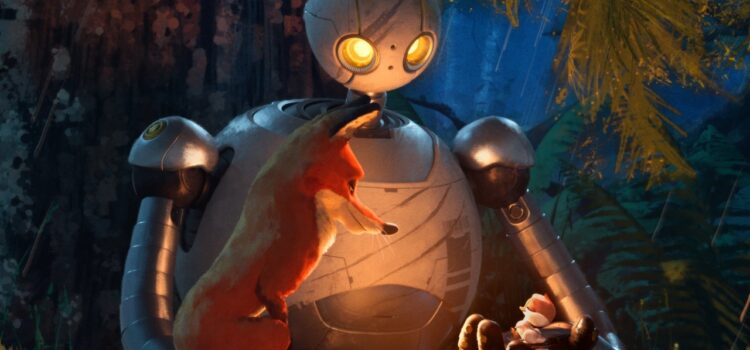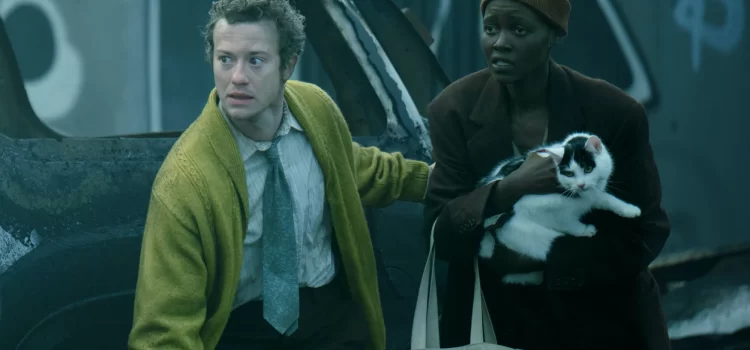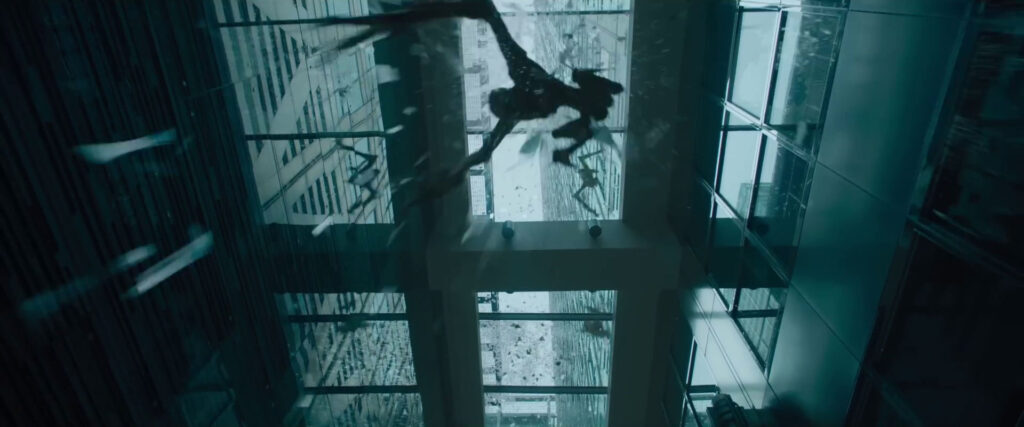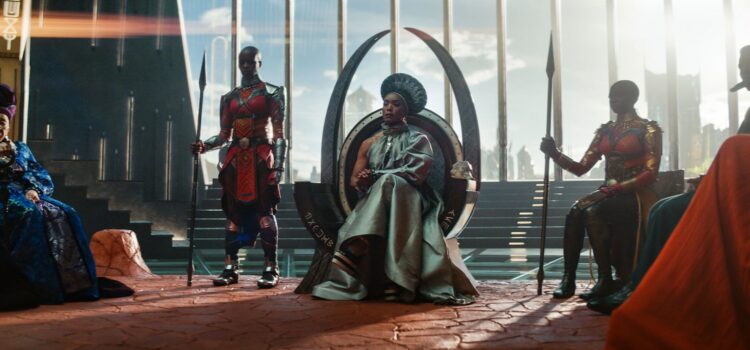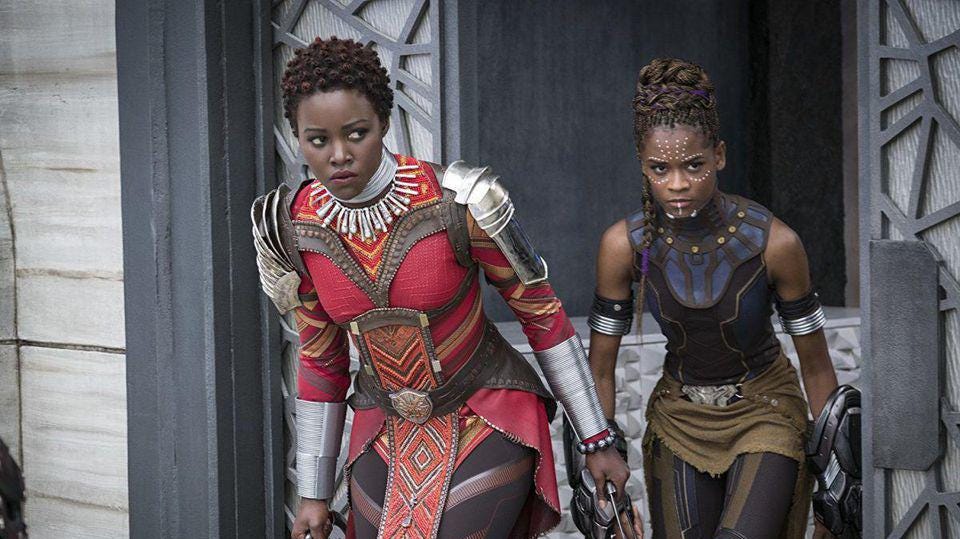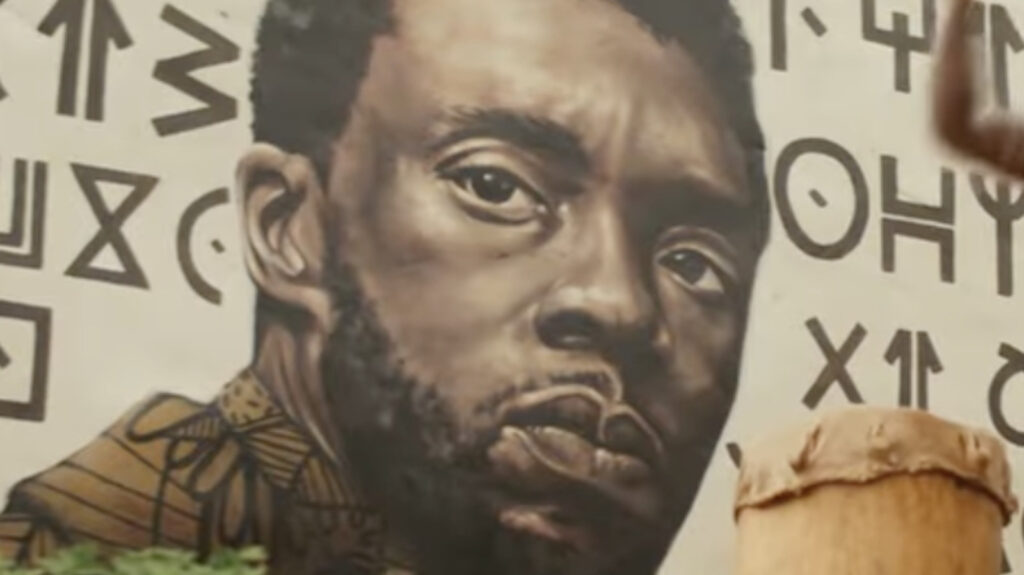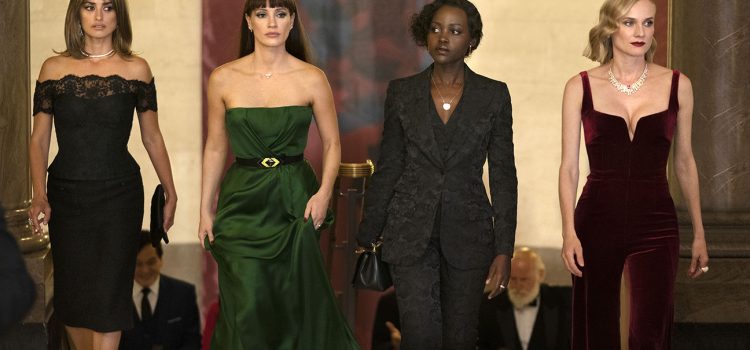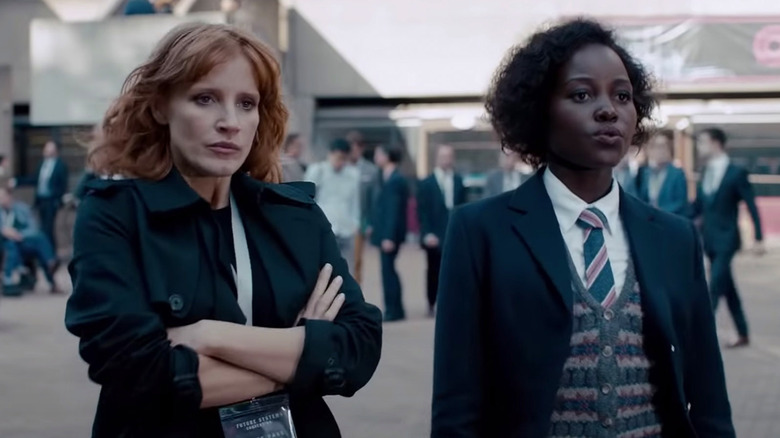A visual feast with a soulful narrative to back it up, director Chris Sanders’ “The Wild Robot” is a rousing, if not completely unmitigated, success for mainstream animation.
Based on the book by Peter Brown, Sanders’ film takes place in a perhaps-not-so-distant future affected by environmental catastrophe, where artificial intelligence robots (created by a company called “Universal Dynamics”) assist humans with day-to-day tasks within the sleek cityscapes that remain. During a typhoon, one of Universal Dynamics’ cargo ships crashes on a remote island, dumping out its robotic occupant, ROZZUM-7134 (voiced by Lupita Nyong’o) in a strange land. “Roz,” as she’s later called, is a robot with a sleek, long-armed, vaguely ominous design who is immediately viewed as a “monster” by the island’s exclusively non-human inhabitants. After translating the local animals’ languages, she clumsily advertises her services to any and every critter she lays eyes on, who don’t take kindly to her outreach. Chaos ensues.
After a harrowing encounter with a bear (voiced by Mark Hamill) in which Roz tumbles from a cliffside, she ends up destroying a goose nest, killing the parent and cracking the unhatched eggs, except for one — bearing the wide-eyed, cute-as-a-button gosling who is later named Brightbill (first voiced by Boone Storm, then by Kit Connor). Brightbill imprints on her, seeing Roz as his mother. Brightbill also, conveniently, destroys Roz’s emergency transponder, which is the only ticket back home to the safety of sterilized automation.
Unsure what to do with this unfamiliar being following her around, Roz eventually bumps into a family of hilariously morbid possums, whose mother (Catherine O’Hara) “tasks” Roz with parenting Brightbill. Thus, Roz takes on her most challenging objective yet — helped along by a mischievous yet sympathetic fox named Fink (Pedro Pascal) — of teaching Brightbill to learn to feed himself, swim, and fly, in preparation for southbound migration come Winter. As time passes, Roz also develops a love for Brightbill that grows beyond her programming. She turns into an increasingly sentient being, powered by her previously-repressed heart, and ultimately brings her newfound family together to fight for their survival in a (sometimes) unforgiving world.

Indeed, “The Wild Robot” — reportedly the last in-house animated production from Dreamworks Studios — maintains an emotional purity that’s a breath of fresh air in our current times. Starting small and adding layer upon layer, Sanders’ film weaves numerous themes — the joys and travails of parenting, the search for purpose in an unfamiliar world, the rewards of breaking from tradition to follow one’s own path, and cooperation as an essential tool for survival — into a (mostly) cohesive whole, complemented by breathtaking animation and a stellar voice cast.
It’s difficult to do justice to the painterly, vibrantly alive animation on display here — eschewing naturalism for a more impressionistic, storybook quality that resembles hand-crafted concept art brought to life. Crisp sunsets blanket tree-covered skylines in warm hues, fog drenches imposing cliffsides kissed by turbulent (immaculately well-animated) waters, and multicolored butterflies wrap around tree trunks, unleashing vibrant splashes of fluttering wings upon takeoff. The visuals pair beautifully with Kris Bowers’ score, which lends a fitting sense of grandiosity to the well-choreographed set-pieces.
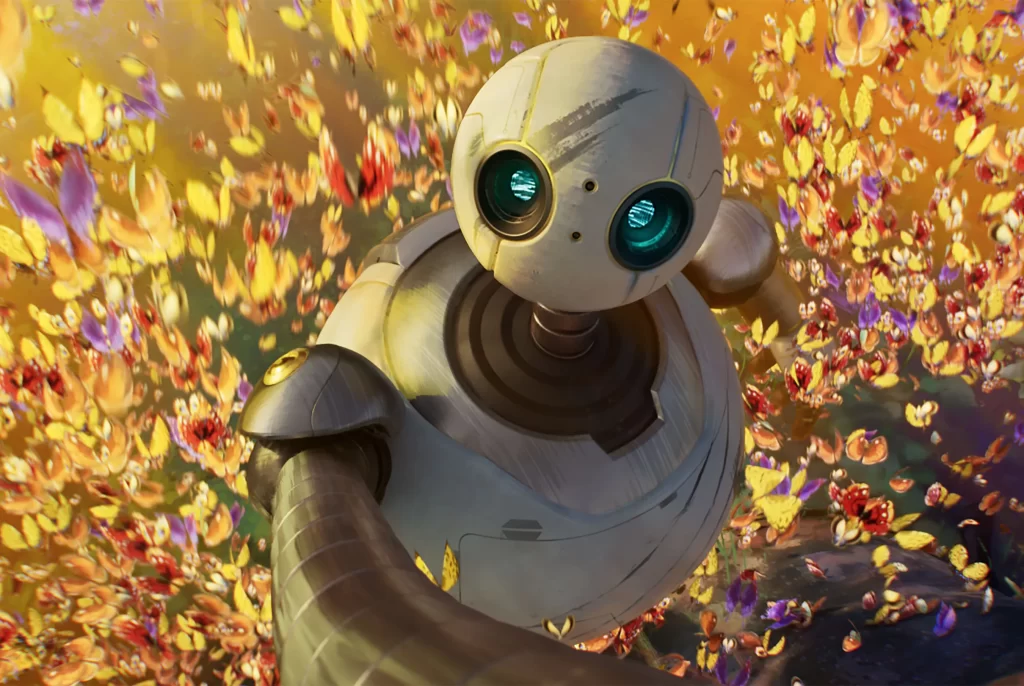
Character designs, rough around the edges in the best way possible, eschew photorealism for emotion and narrative symbolism: Roz’s appearance evolves as she evolves, becoming scratched and stained as a new life opens before her, gradually operating by her own designs rather than what’s been preordained for her. The various critters that surround her, both big and small, are bursting with personality, voiced by an exceptional cast that doesn’t throw in big names just for the sake of it. Each of these characters inhabits the same environment, side-by-side but in their own little worlds, not yet realizing that working together determines their survival.
As Roz raises the young Brightbill in her own unconventional ways — her robotic behaviors and inputs are mirrored by Brightbill, which “other” him from his peers — “The Wild Robot” overcomes its predictability with heart and charm to spare. Sanders and Brown’s screenplay buffets its occasionally heavy-handed messaging and slapstick humor with a sense of melancholy, and finally, of hope in the power of kindness, understanding, and community.
Nyong’o poignantly conveys Roz’s changing thoughts and mounting existential panic, lending emotional heft to Roz’s internal and external changes. “The Wild Robot” is ultimately Roz’s story, not Brightbill’s, zeroing in on the sacrifices of raising a child, the anxiety of releasing that child into the world, and embracing a new “home” far separated from her corporate, dystopian beginnings. It’s frustrating that the film’s uneven pacing doesn’t quite do justice to Roz’s arc, not fully allowing pivotal scenes in the latter half space to breathe and becoming schematic as a result.
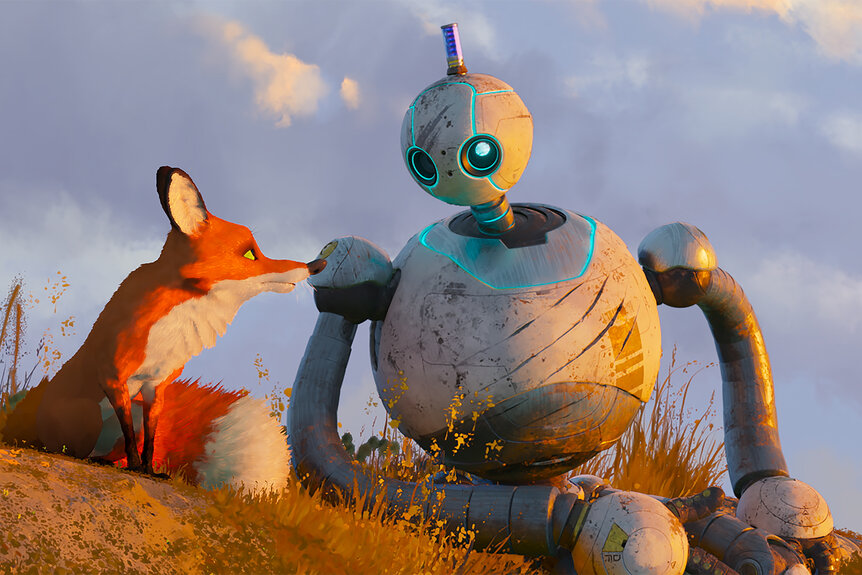
Connor tugs heart-strings as the unconventional yet resilient Brightbill struggles to fit in and, over time, recognizes the deep love that his surrogate mother has for him. Pascal is nearly unrecognizable as the rascally, surprisingly complex Fink who’s looking for his own sense of belonging. Matt Berry is wryly funny as Paddler the beaver, while Bill Nighy as an elder goose named Longbill, is typically dignified but saddled with the screenplay’s more explanatory (a.k.a. eye-rolling) dialogue.
The finale — chaotic, action-packed, and delivering emotional moments that are easy to see coming — is too tidy and beholden to modern sensibilities, neglecting the film’s otherwise graceful attention to world-building and character development. It also requires a distracting suspension of disbelief in the denouement.
Still, the otherwise exceptional storytelling on display overshadows most hiccups down the road. There’s real merit to Sanders’ direct call for unity going into an uncertain future. It’s the kind of soulful, all-ages experience we need more of right now, one that pairs spectacular visuals with a heartfelt story to match.
“The Wild Robot” is a 2024 animated family comedy-drama-science fiction film directed by Chris Sanders and stars Lupita Nyong’o, Pedro Pascal, Kit Connor, Boone Storm, Matt Berry, Bill Nighy, and Mark Hamill. It is rated PG for action/peril and thematic elements, and its runtime is 1 hour, 42 minutes. It opened in theaters September 27. Alex’s Grade: B+.
Alex McPherson is an unabashed pop culture nerd and a member of the St. Louis Film Critics Association.

